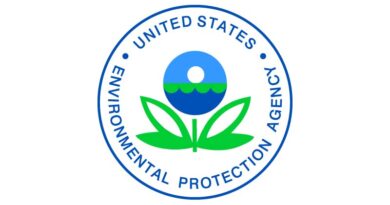EPA Refuses to Regulate Risks of Pesticide Formulations
02 October 2023, San Francisco: The U.S. Environmental Protection Agency (EPA) denied a 2017 legal petition by Center for Food Safety (CFS) calling on EPA to require testing and data on whole pesticide formulations and mixtures and to consider their effects on endangered and threatened species. After years of silence from EPA, CFS, along with Californians for Pesticide Reform (CPR), the Center for Environmental Health (CEH), and Pesticide Action Network of North America (PANNA) took the agency to court in October 2022 to demand a response. EPA issued its decision Friday in response to a court deadline reached through settlement.
“Disappointingly, EPA doubled down on ignoring the hazards of actual pesticide formulations sprayed in the real world by instead only regulating what the pesticide companies consider ‘active’ ingredients,” said Sylvia Wu, senior attorney at CFS and counsel in the case. “It’s an irresponsible and unlawful decision that leaves farming communities and endangered species unprotected from exposure to different pesticide formulations and mixtures.”
The EPA denial—following several years of inaction on the CFS petition—means the agency will instead continue to focus pesticide testing and data narrowly on “active” ingredients while ignoring the real-world impacts of pesticide formulations and interactions. EPA refused to act despite knowing that pesticide formulations cause significant environmental and human health harms that are not captured by tests on the isolated active ingredients. Extensive research shows that when a pesticide combines active ingredients with what the EPA calls inert ingredients, the mixture can increase pesticide toxicity, ecotoxicity, and exposure, both independently and through synergistic effects.
“Science clearly shows us that pesticides are one significant factor in the decline of bees, butterflies, frogs, and other creatures, and also impact human health,” said Bill Freese, science director at Center for Food Safety. “Yet EPA has approved over 18,000 pesticide products as essentially safe. One explanation for this gaping discrepancy is the Agency’s failure to require testing of pesticide formulations and mixtures, which numerous studies demonstrate are more toxic than their components,” he added.
In 2017, EPA’s Office of the Inspector General acknowledged the danger, also calling on the agency to improve its oversight of pesticides by requiring and assessing information on chemical mixtures and potential synergistic effects. According to the report, data on these interactions is important “because the data allows the EPA a greater ability to assess human health and environmental risks combined with real-world pesticide use.” The 2017 CFS legal petition then provided EPA the blueprint of why and how to take action.
Yet in EPA’s response denying the petition, the agency refused to require any such additional data, instead claiming only that it was “the responsibility of the regulated community to report incidents involving pesticides, including with inerts and mixtures, as well as any other information available concerning adverse effects resulting from the use of a pesticide.”
CFS, through its Pollinators & Pesticides program, has long advocated for thorough, science-based safety testing and proper regulation of new pesticide product uses, including assessment of actual pesticide formulations and mixtures. Wu said that CFS would be “rigorously exploring and pursuing all next steps to protect communities and the environment.”
(For Latest Agriculture News & Updates, follow Krishak Jagat on Google News)















